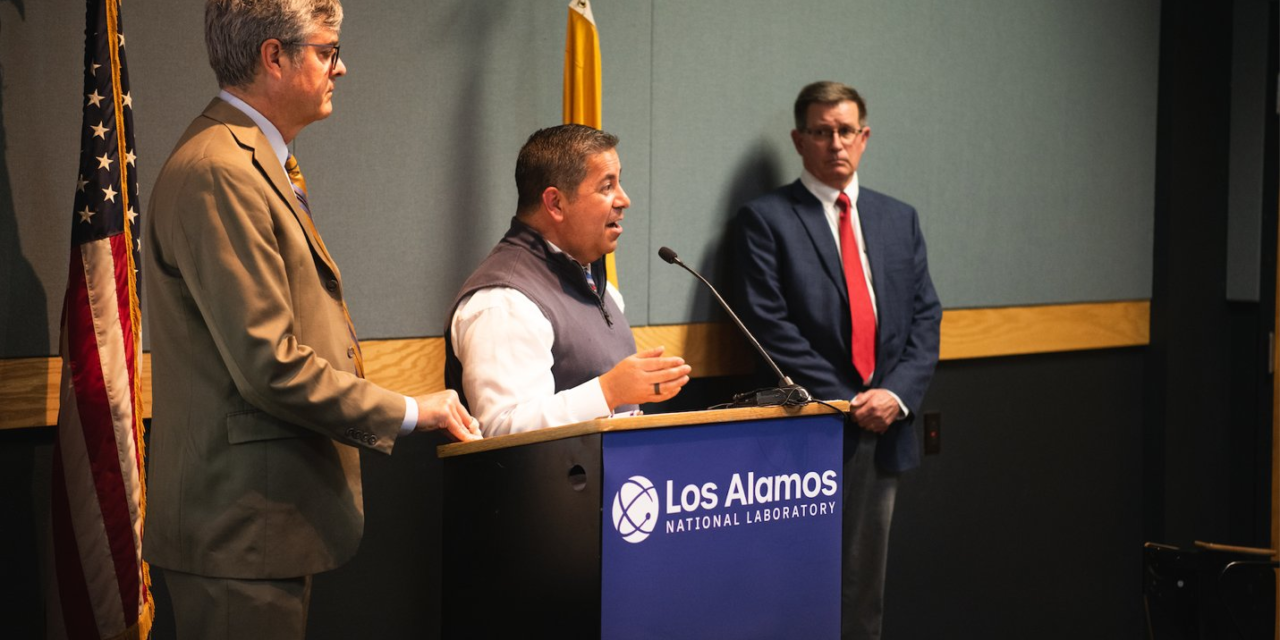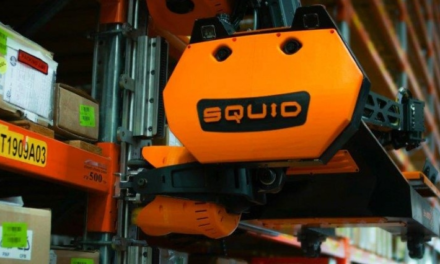Albuquerque Journal
New Mexico and ABQ News, Sports, Business and more
Published: Friday, August 12th, 2022 at 10:05PM
Updated: Saturday, August 13th, 2022 at 12:05AM
Copyright © 2022 Albuquerque Journal
The new CHIPS and Science Act that President Joe Biden signed into law on Tuesday marks the biggest investment in U.S. technology development in generations, bringing substantial benefits to New Mexico and many other states.
The bipartisan law authorizes more than $250 billion in funding over the next decade to expand domestic semiconductor manufacturing, research and development of new technology, and workforce training to rebuild U.S. technological leadership. At its heart, the act aims to reverse the mass exodus of chip fabrication, which, over the last 30 years, has moved by and large to East Asia and other places.
That’s made the U.S. dependent and vulnerable to global supply chains that, when disrupted, can potentially cripple domestic production of everything from cars to mobile devices and nearly everything else that in today’s world requires chips to operate. And with modern chip technology continually advancing, re-shoring production has become critical for creating new, complex technologies like artificial intelligence, robotics, advanced computing and improved medical diagnostics and therapies.
The new law aims to accelerate domestic efforts in all those areas, pumping billions of dollars into public and private initiatives throughout the U.S. And much of that money will trickle down to many states, including New Mexico, where the local semiconductor industry is expanding, and where high-tech research and development exceeds many other places, thanks to the state’s national labs and universities.
Intel Corp. and other New Mexico-based companies hope to tap into some of the $52 billion now earmarked for chip development and manufacturing. That includes $39 billion in grants and loans over the next five years to help subsidize factory construction and expansion, plus $11 billion for research and development of new chip technology.
Another $24 billion in federal tax incentives for manufacturers is also available to offset up to 25% of investments in facilities and equipment.
And, apart from direct spending on semiconductor development, the act authorizes $170 billion over 10 years to finance, among other things, technology research and development, workforce training, and the establishment of public-private partnerships around the country to create 20 “regional technology hubs.” That funding will be available to advance a broad swath of emerging technologies, not just semiconductors.
The U.S. Department of Commerce will oversee all funding awarded to the semiconductor industry, with other federal agencies – particularly the National Science Foundation and the U.S. Department of Energy – distributing the research and development money on a competitive basis.
Intel expansion
The Commerce Department must yet write the guidelines for semiconductor assistance, but Intel Corp. in Rio Rancho and other local chip-technology companies say they will seek grants and tax incentives going forward.
Intel, which lobbied heavily for the act’s passage, will particularly benefit from the federal funding, although for now, that assistance is expected to flow into company expansion in other states. That includes construction of a new, $20 billion “mega fab” in Ohio, which Intel now says could grow to $100 billion, thanks to the CHIPS Act.
It could also benefit Intel operations in Arizona, where the company is investing $20 billion to broaden its existing manufacturing complex.
“We are thrilled to see funding for the CHIPS Act enacted into law,” Intel CEO Pat Gelsinger said in a statement this week. “Intel is committed to restoring end-to-end leadership, innovation and manufacturing here in the U.S. We are doing our part and the federal government has now done their part.”
In New Mexico, the company is already investing $3.5 billion to upgrade its local plant, enabling production of new semiconductor technology once construction ends early next year. The upgrade will add 700 new permanent jobs in Rio Rancho, where Intel already employs about 1,900 people.
It’s unclear if Intel can tap into federal funding for the current expansion. But it will apply for the 25% tax incentive, said Intel New Mexico spokeswoman Linda Qian.
“We expect the Secretary of Commerce to release guidelines for the CHIPS Act programs, and we will evaluate those guidelines once they are available,” Qian told the Journal.
More importantly, CHIPS funding could potentially contribute to future investment in New Mexico, especially given the Rio Rancho plant’s contributions to new chip technology development, said Greg Slater, Intel vice president and senior director of global regulatory affairs.
“With a $3.5 billion investment, it’s hard to imagine (the local plant) going away anytime soon,” Slater recently told the Journal Editorial Board. “… And one unique thing with Rio Rancho, it’s both a chip development facility and a manufacturing site.”
In fact, the current upgrade will convert the New Mexico plant into a first-of-its-kind, advanced-chip packaging facility.
“That can open up all kinds of future possibilities,” Slater said. “Any time you bring in a new operation at a site, you often get spin-off benefits, and the CHIPS Act makes it possible to do things that were not cost effective before.”
Under Pat Gelsinger, who became Intel CEO in February 2021, the company has launched an aggressive investment plan to expand its manufacturing capabilities, in both the U.S. and Europe, to better compete with East Asian chip makers.
Overall, semiconductor manufacturing in the U.S. fell from 37% of global chip production in 1990 to below 12% today. And Intel’s goal now is to build up its own manufacturing volume to 50% of market share by 2030, with domestic U.S. plants contributing 30%, and European-based operations 20%, Slater said.
Homegrown firms also expanding
Two local semiconductor companies – 3D Glass Solutions and Skorpios Technologies – also hope to benefit from the CHIPS Act for their own expansion plans.
3D Glass, which launched in Albuquerque in 2006, has created a novel, ceramic-based glass material to make advanced semiconducting chips. The company has raised more than $40 million in private equity, including a $24 million round of venture investment last fall, and is now working to ramp up its chip production for wireless telecommunications.
It expanded from a 5,000-square-foot facility in 2015 to a 40,000-square-foot space today near the Balloon Fiesta Park, where it now produces 300 wafers per month. But it’s currently upgrading the facility with new, high-tech equipment to produce larger wafers with a 1,500-per-month volume capacity by January 2023, and then 5,000 wafers a month by 2024, said company president and CEO Surendra Mandava.
Its workforce will expand from 55 now to 80 by year-end 2023.
The expansion requires significant investment with higher production costs, something the company hopes to offset through federal funding.
“We’re not looking for freebies, but we will seek expansion support and tax credits,” Mandava told the Journal. “We need a lot of capital to grow our operations.”
The act’s workforce training investments – which includes $13 billion to strengthen science, technology, engineering and math, or STEM, education – could also help build a skilled local workforce, Mandava added.
“As chip manufacturing has moved to other countries, fewer people have been trained for this industry,” Mandava said. “That’s one of the critical benefits of the CHIPS Act.”
Skorpios Technologies, meanwhile, wants to create a new “Nanofabrication Innovation Center” in Albuquerque to spearhead local development of next-generation, three-dimensional technology that integrates different materials on a single chip. The company, which launched here in 2009, already created a breakthrough process for merging silicon with traditional materials used in optical communications, substantially reducing manufacturing costs and increasing operating efficiency to speed data transfer.
It currently makes its chips at its own factory in Texas. But it’s now considering relocating that facility to Albuquerque alongside the proposed innovation center, which it would manage in partnership with the University of New Mexico’s Center for High Tech Materials and Sandia National Laboratories.
Its local workforce could grow from about 40 now to 150, although the plan is still in the “conceptual stage,” said company founder, president and CEO Stephen Krasulick. CHIPS Act assistance, however, would help a lot.
“As a growing company, we hope some of the CHIPS Act funding will trickle down to us, and that it doesn’t get all consumed by the big industry players,” Krasulick told the Journal.
DOE and the labs
New Mexico could also capture a significant amount of CHIPS money for research and development through Sandia and Los Alamos National Laboratory. The law allocates $16.5 billion in new money for science and innovation, and $14.7 billion for infrastructure upgrades and modernization at DOE’s 17 national laboratories.
New Mexico Democratic Sen. Ben Ray Luján played a pivotal role in securing that funding, which he discussed in a press conference Friday afternoon with the directors of both national labs.
It’s uncertain how much money will actually flow into New Mexico. But Luján and the lab directors said they expect to receive both infrastructure and research funding.
“The CHIPS Act provides a framework to increase funding for scientific infrastructure and the research we do,” said LANL Director Thom Mason. “I expect a significant fraction of it will wind up in New Mexico.”
The Commerce Department will also administer $10 billion in CHIPS funding to build 20 new “regional technology hubs” across the country, and the state’s congressional delegation is now lobbying for one of them to be located in New Mexico.
More ABQnews Seeker
Sharing





